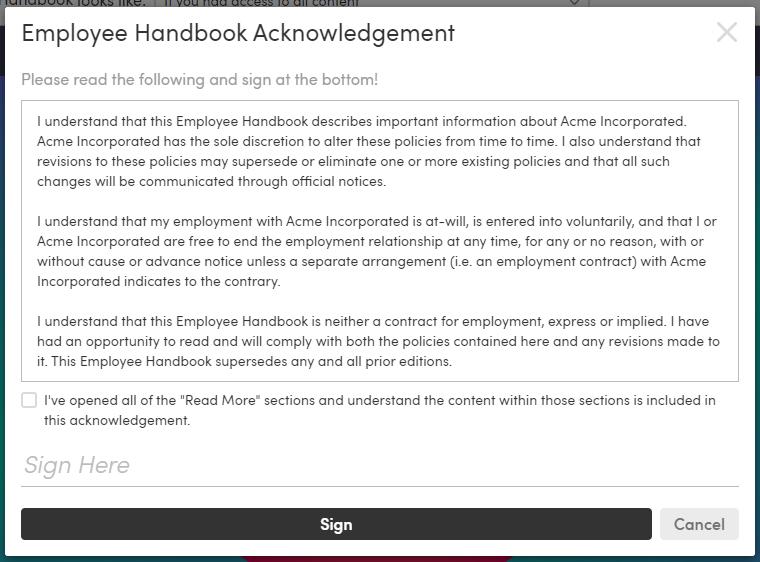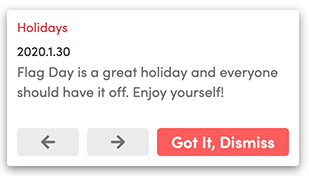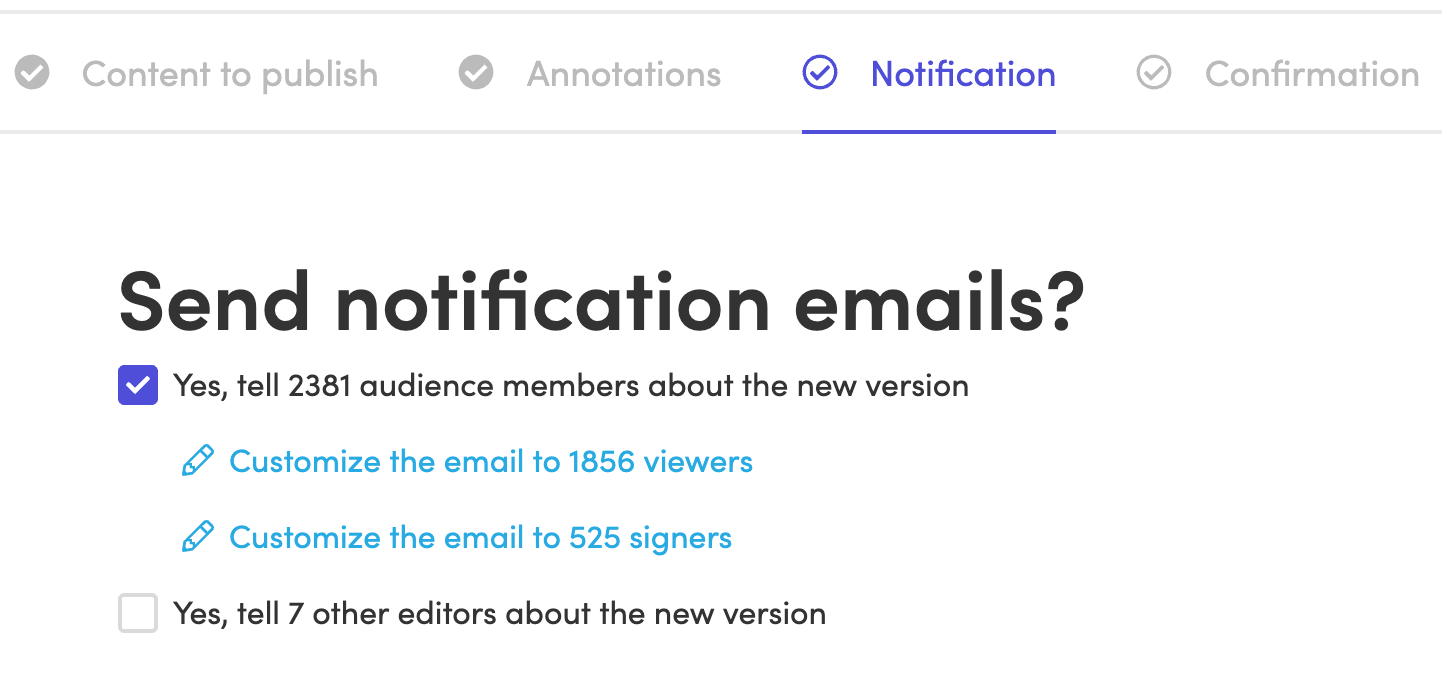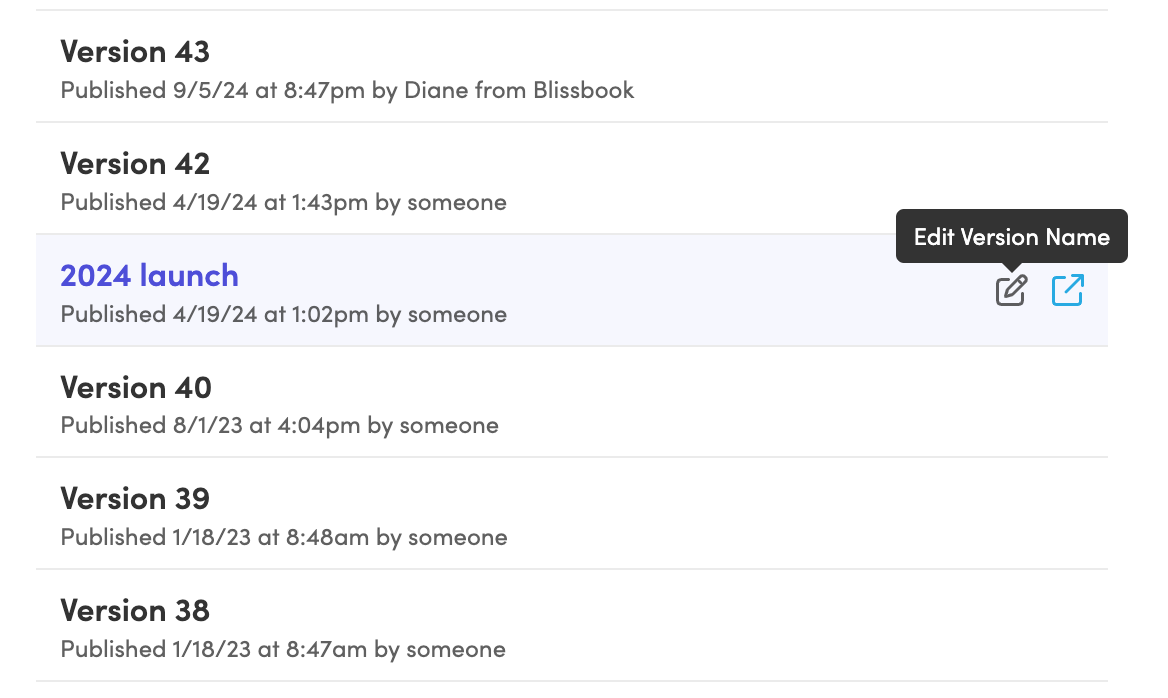When Should Employees Re-Sign the Handbook?
Do we really need to ask everyone to sign the handbook again? It’s a question HR teams ask often, usually after updating a policy, refreshing some language, or publishing a revised version of the employee handbook. And it’s a fair question! Getting signatures takes time and effort, and it interrupts your employees’ flow. Doing it too often can feel excessive, but skipping it altogether could leave your company exposed.
Here’s the good news: most handbook updates don’t require employees to re-sign. Minor wording tweaks, reorganized sections, and even moderate policy shifts can often be communicated without triggering a formal acknowledgment.
But there are moments when a re-sign is more than just a nice-to-have. Maybe you’ve made significant changes to your policies, moved to a brand-new platform, or had a major legal shift that affects how your employees work. In these cases, a new signature can help reinforce clarity, accountability, and compliance.
In this article, we’ll walk through exactly when employees should re-sign the handbook, when it’s overkill, and how to manage the gray areas in between. Because getting it right isn’t just about checking a box, it’s about protecting your people, your policies, and your peace of mind.
Do You Collect Signatures Annually?
Before diving into the details of what kind of change requires what kind of response, start here: Do you have a regular cadence for collecting employee signatures?
If the answer is yes, great. You’ve already built a strong foundation. Annual acknowledgments give you more flexibility throughout the year. You can roll out updates as needed, notify employees in context, and save the signature request for your standard annual process. In this case, only rare, high-impact changes would justify an extra mid-year signature round.

But if your answer is no (or “not really”) the bar for re-signing is lower. Without that consistent rhythm, it’s easy for small changes to pile up unnoticed. A few quiet updates over a couple of years can add up to a handbook that looks very different from the one employees originally signed. In those situations, getting a fresh acknowledgment helps ensure everyone’s on the same page.
One more thing: a signature doesn’t automatically equal awareness. Just because someone clicked “I acknowledge” doesn’t mean they understood what changed or how it affects them. That’s why we’ll also cover smarter ways to keep employees informed between signature cycles especially when the change matters, but not quite enough to justify a formal re-sign.
Blissbook’s annotations functionality is one such smarter way. You can directly add notes to updates within the handbook, showing employees what’s changed since they last viewed or signed it. These visual cues appear as digital sticky notes right next to the updated content, so employees don’t have to guess what’s new, reread the entire handbook, or compare the document to a list of notes in an email.

The Four Tiers of Handbook Changes (And What to Do About Them)
Not every update is created equal. Some edits are so minor they barely register, while others reshape how employees engage with your policies. The key is understanding the level of impact and responding with the right level of communication (and yes, sometimes a new signature).
Let’s break down the four tiers of changes and what actions they call for.
Minor Edits: Skip the Signature and Notification
If you’re cleaning up typos, fixing a bit of grammar, or tightening redundant language, there’s no need to alert your team. Even minor rewording, when it doesn’t alter the meaning of a policy, can be published without fanfare. These changes don’t affect how employees interpret or follow your policies, so there’s no need for annotations, email notifications, or signatures.
Noticeable But Not Disruptive Changes
Sometimes you make more visible changes like restructuring a section, moving content around, or updating a benefits policy that employees will hear about through other channels. These updates might prompt a few questions from attentive readers, but they don’t materially shift expectations. In these cases, you may want to annotate the change so curious people can answer their question before coming to you.
Medium to Major Changes That Affect People Now
If you’re rolling out a new internal program, adjusting a policy that takes effect immediately, or updating the handbook in response to a legal change, employees should know what’s going on. That means annotating the update and sending a notification email to make sure it’s on their radar. If you already have a reliable annual signature process in place, there’s usually no need for an extra acknowledgment. The goal is awareness, not more paperwork.

A good example of this is the NLRB’s Stericycle ruling in 2023, which reversed a six-year precedent and shifted how workplace rules are evaluated under the National Labor Relations Act. The new standard emphasized how employees, especially those economically dependent on the employer, might interpret workplace rules as chilling their rights to organize or discuss working conditions. In response, many employers had to revisit policies on things like social media, solicitation, distribution, and employee conduct.
That kind of regulatory shift can lead to a wave of handbook changes. In cases like this, annotations are essential and a notification email is a smart move. But a re-sign probably isn’t necessary unless you haven’t collected signatures in a while or the changes drastically reshape employee expectations.
Big Changes = Big Response
Then there are the major updates: the kind that fundamentally shift your policies, impact your people, or reflect major legal changes. Maybe you’ve just gone through a merger. Maybe your entire handbook got a glow-up. Or maybe you moved from PDF to Blissbook (welcome aboard!).
When expectations change in a big way or contradict what employees were previously told, it’s time to ask for a new signature. Re-signing ensures everyone’s aligned, informed, and legally covered moving forward.
When in Doubt: Consider the Accumulation Factor
Not every re-sign moment comes with flashing lights and a clear headline. Sometimes it’s quieter, built up over time through a string of small changes that, together, reshape the employee experience.
Maybe you’ve updated your time-off policy language. Adjusted a few benefits. Tweaked some rules around remote work. Individually, these might not feel significant. But step back and look at the bigger picture: have the expectations you’re setting for employees shifted meaningfully in the past year or two?
If so, and especially if it’s been more than a year since your last signature round, it may be time to start a new signature round. Even without one major change, a collection of smaller updates can still leave employees operating with outdated assumptions.
Special Cases to Keep in Mind
Most companies can rely on good judgment and a consistent process to decide when re-signing the handbook is necessary, but if you’re in a highly regulated industry, operate as a federal contractor, or are regularly subject to audits or external compliance reviews, the rules might be tighter.
In these cases, the expectation may not just be that employees are informed, it may be that you can prove it with time-stamped signatures and a clear audit trail. If an external entity (like a government agency or third-party auditor) is going to scrutinize your handbook history, it’s smart to play it safe. That might mean triggering a re-sign even for changes that wouldn’t normally require one.

Bottom line: when legal or contractual requirements are in play, the usual thresholds may not apply. Always align with your legal counsel or compliance officer to make sure you’re covered. This article isn’t legal advice, and while we love helping teams make smart policy decisions, only your attorney can tell you what’s right for your specific situation.
Keep People Informed Without Overwhelming Them
You don’t need to shout every time your handbook changes. In fact, over-communicating minor updates can lead to email fatigue and policy apathy.
Instead, use smart tools that meet employees where they are. Blissbook’s annotations help highlight changes right inside your handbook, so updates are visible the moment someone views the updated content. For updates that are more impactful or time-sensitive, a notification email can give employees a heads-up without asking them to take action.

The rest of the time? Let the handbook do its job. Employees should be able to navigate it on their own terms, with the confidence that the most current version – which is easy for employees to find with a digital handbook – is always available and that any changes they care about will be easy to spot. That’s how you keep your policies living, useful, and trusted.
Final Thoughts
Most of the time, handbook updates don’t require a fresh signature, but that doesn’t mean you can hit “publish” and call it a day. The real goal is clarity: making sure employees know what’s changed, why it matters, and what’s expected of them.
Use good judgment, be consistent with your signature cadence, and lean on tools like annotations and change tracking to keep employees in the loop.
Blissbook makes that whole process easier. From designing a beautiful, digital handbook to publishing updates with transparency and collecting acknowledgments when it counts. If you’re ready to build a smarter, more flexible handbook experience, set up a free trial and get started today.
This was super helpful! Thank you, Angeli!